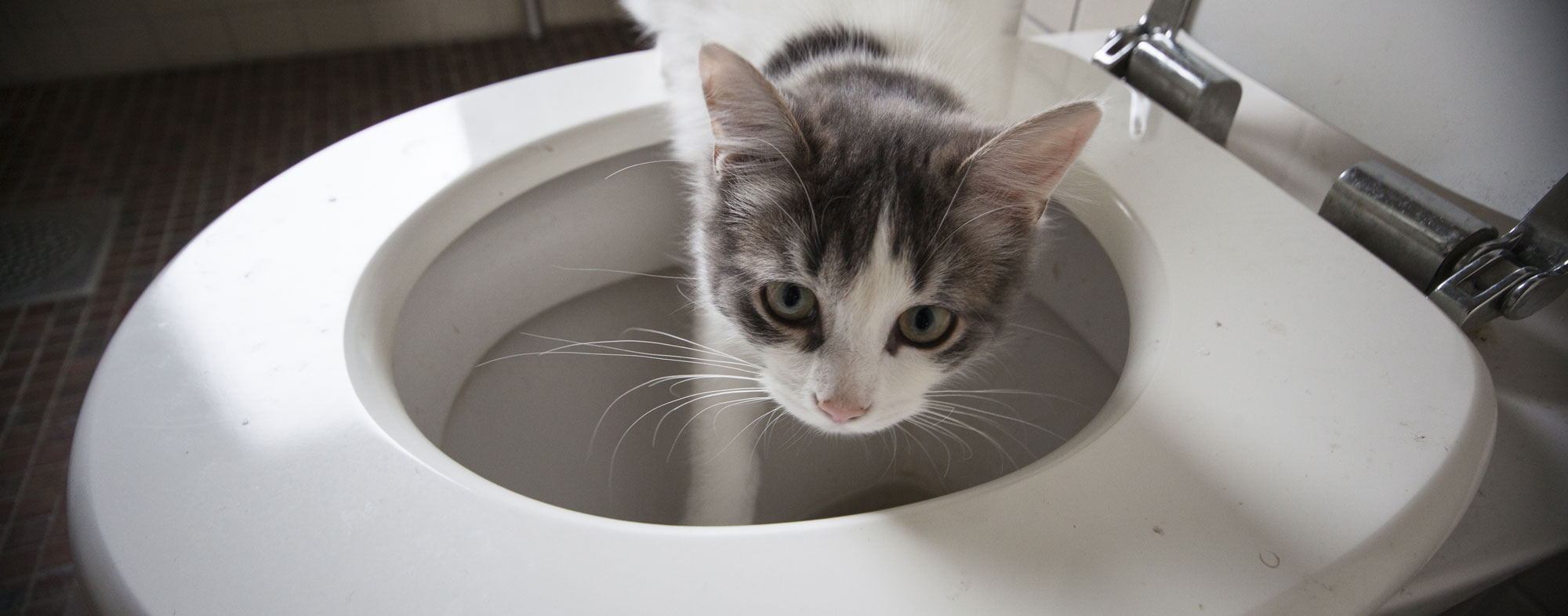Reasons You Should Never Flush Cat Poop Down Your Toilet - Important Information
Reasons You Should Never Flush Cat Poop Down Your Toilet - Important Information
Blog Article
We've encountered this article pertaining to How to Dispose of Cat Poop and Litter Without Plastic Bags directly below on the net and concluded it made perfect sense to relate it with you here.

Intro
As pet cat proprietors, it's important to be mindful of exactly how we throw away our feline good friends' waste. While it may appear practical to purge pet cat poop down the commode, this practice can have destructive consequences for both the atmosphere and human wellness.
Alternatives to Flushing
Thankfully, there are much safer and more accountable ways to dispose of pet cat poop. Consider the following alternatives:
1. Scoop and Dispose in Trash
The most typical technique of taking care of pet cat poop is to scoop it into a biodegradable bag and throw it in the trash. Make sure to utilize a dedicated clutter scoop and take care of the waste immediately.
2. Usage Biodegradable Litter
Opt for eco-friendly pet cat clutter made from materials such as corn or wheat. These clutters are environmentally friendly and can be safely thrown away in the trash.
3. Bury in the Yard
If you have a lawn, think about hiding cat waste in a designated location away from veggie gardens and water resources. Make certain to dig deep enough to prevent contamination of groundwater.
4. Mount a Pet Waste Disposal System
Purchase an animal garbage disposal system especially designed for cat waste. These systems utilize enzymes to break down the waste, minimizing smell and ecological effect.
Health and wellness Risks
Along with environmental worries, flushing feline waste can additionally pose wellness risks to humans. Pet cat feces might contain Toxoplasma gondii, a bloodsucker that can trigger toxoplasmosis-- a possibly extreme illness, particularly for pregnant women and people with weakened immune systems.
Ecological Impact
Flushing pet cat poop presents damaging virus and bloodsuckers right into the water system, presenting a substantial risk to marine ecosystems. These contaminants can adversely influence aquatic life and compromise water quality.
Conclusion
Accountable pet possession expands past offering food and shelter-- it likewise includes proper waste monitoring. By refraining from flushing pet cat poop down the toilet and opting for different disposal techniques, we can lessen our environmental impact and safeguard human wellness.
Why Can’t I Flush Cat Poop?
It Spreads a Parasite
Cats are frequently infected with a parasite called toxoplasma gondii. The parasite causes an infection called toxoplasmosis. It is usually harmless to cats. The parasite only uses cat poop as a host for its eggs. Otherwise, the cat’s immune system usually keeps the infection at low enough levels to maintain its own health. But it does not stop the develop of eggs. These eggs are tiny and surprisingly tough. They may survive for a year before they begin to grow. But that’s the problem.
Our wastewater system is not designed to deal with toxoplasmosis eggs. Instead, most eggs will flush from your toilet into sewers and wastewater management plants. After the sewage is treated for many other harmful things in it, it is typically released into local rivers, lakes, or oceans. Here, the toxoplasmosis eggs can find new hosts, including starfish, crabs, otters, and many other wildlife. For many, this is a significant risk to their health. Toxoplasmosis can also end up infecting water sources that are important for agriculture, which means our deer, pigs, and sheep can get infected too.
Is There Risk to Humans?
There can be a risk to human life from flushing cat poop down the toilet. If you do so, the parasites from your cat’s poop can end up in shellfish, game animals, or livestock. If this meat is then served raw or undercooked, the people who eat it can get sick.
In fact, according to the CDC, 40 million people in the United States are infected with toxoplasma gondii. They get it from exposure to infected seafood, or from some kind of cat poop contamination, like drinking from a stream that is contaminated or touching anything that has come into contact with cat poop. That includes just cleaning a cat litter box.
Most people who get infected with these parasites will not develop any symptoms. However, for pregnant women or for those with compromised immune systems, the parasite can cause severe health problems.
How to Handle Cat Poop
The best way to handle cat poop is actually to clean the box more often. The eggs that the parasite sheds will not become active until one to five days after the cat poops. That means that if you clean daily, you’re much less likely to come into direct contact with infectious eggs.
That said, always dispose of cat poop in the garbage and not down the toilet. Wash your hands before and after you clean the litter box, and bring the bag of poop right outside to your garbage bins.
https://trenchlesssolutionsusa.com/why-cant-i-flush-cat-poop/

Do you really like reading about Can You Flush Cat Poo or Litter Down the Toilet?? Give a short review further down. We will be pleased to hear your insights about this write up. We are looking forward to see you back again in the near future. Sharing is nice. Helping people is fun. We treasure reading our article about Can You Flush Cat Poop Down The Toilet?.
Call Today Report this page